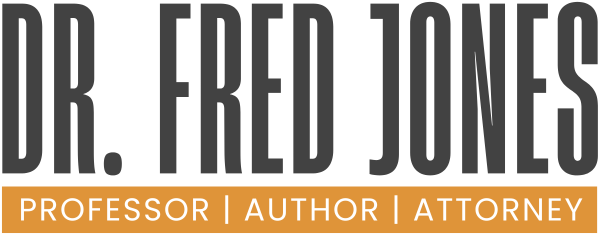Dr. Fred Jones
3 Simple Ways to Protect Your Creative Works
[fusion_builder_container hundred_percent=”yes” overflow=”visible”][fusion_builder_row][fusion_builder_column type=”1_1″ background_position=”left top” background_color=”” border_size=”” border_color=”” border_style=”solid” spacing=”yes” background_image=”” background_repeat=”no-repeat” padding=”” margin_top=”0px” margin_bottom=”0px” class=”” id=”” animation_type=”” animation_speed=”0.3″ animation_direction=”left” hide_on_mobile=”no” center_content=”no” min_height=”none”]
Your creative works is your intellectual property. Intellectual property is the creations of your mind. Your creative works could include anything you write, publish, film, video, create, or produce. This list also could include any programs, courses, and or outlines you invent, contribute, affect, and or impact. In light of social media and growing online businesses, one of the biggest challenges faced by entrepreneurs is how to protect their creative works?
Here are three simple ways to help protect your creative works.
#1. Put it is writing: CREATE A WRITTEN AGREEMENTS – When you start a new project with a partner or friend, generally everyone is excited about the idea and the possible outcomes. This is the best time to execute a writing spelling out the terms, details, deadlines, and or consequences or penalties if something goes wrong. Spell it out on paper even if it has to be in an email. While this may not be the best form of writing for legal purposes, it is better than no writing at all.
#2. Put it in writing: SIGN A WRITTEN WAIVER – A waiver is the voluntary relinquishment or surrender of some known right or privilege. Here again, the best time to get anyone to sign a waiver is upfront during the honeymoon phase of the project. If you wait until the excitement wears off chances are, you will have a more difficult time getting the other persons to sign later. A good example of signed waivers is an event waiver. You waive rights to photos, recordings, and or interviews happening during an event.
#3. Put it in writing: WRITE A BOOK or eBook – Writing a book has never been easier and the benefits have never been greater. When you write a book you are protecting your creative works. Placing your ideas in print form such as a book grants the author and opportunity for local, state, federal, and international copyright protections. This protection could last for the lifetime of the author plus 70 years. Your book is your body of evidence against anyone found infringing upon your rights.
Hopefully these 3 Ways to Protect Your Creative Works will help you protect more of your intellectual property.
Share this Blog:
If you found this educational blog helpful, share it, leave a comment, and follow me via social media. The content of this article is for educational purposes only and not legal advise. © Copyright 2015 Frederick D. Jones
Want To Use This Blog:
Please do so. Just do me one small favor, include this complete blurb.
Frederick D. Jones, J.D. is an accomplished author, professor, and attorney. His books, About My Father’s Business, An Act of Bravery and Through A Teacher’s Eyes can all be found on Amazon. Book him as your next keynote speaker and your audience will thank you long after he is gone! For more information or to subscribe please visit http://drfredjones.com or Call: 318-617-7190
[/fusion_builder_column][/fusion_builder_row][/fusion_builder_container]

